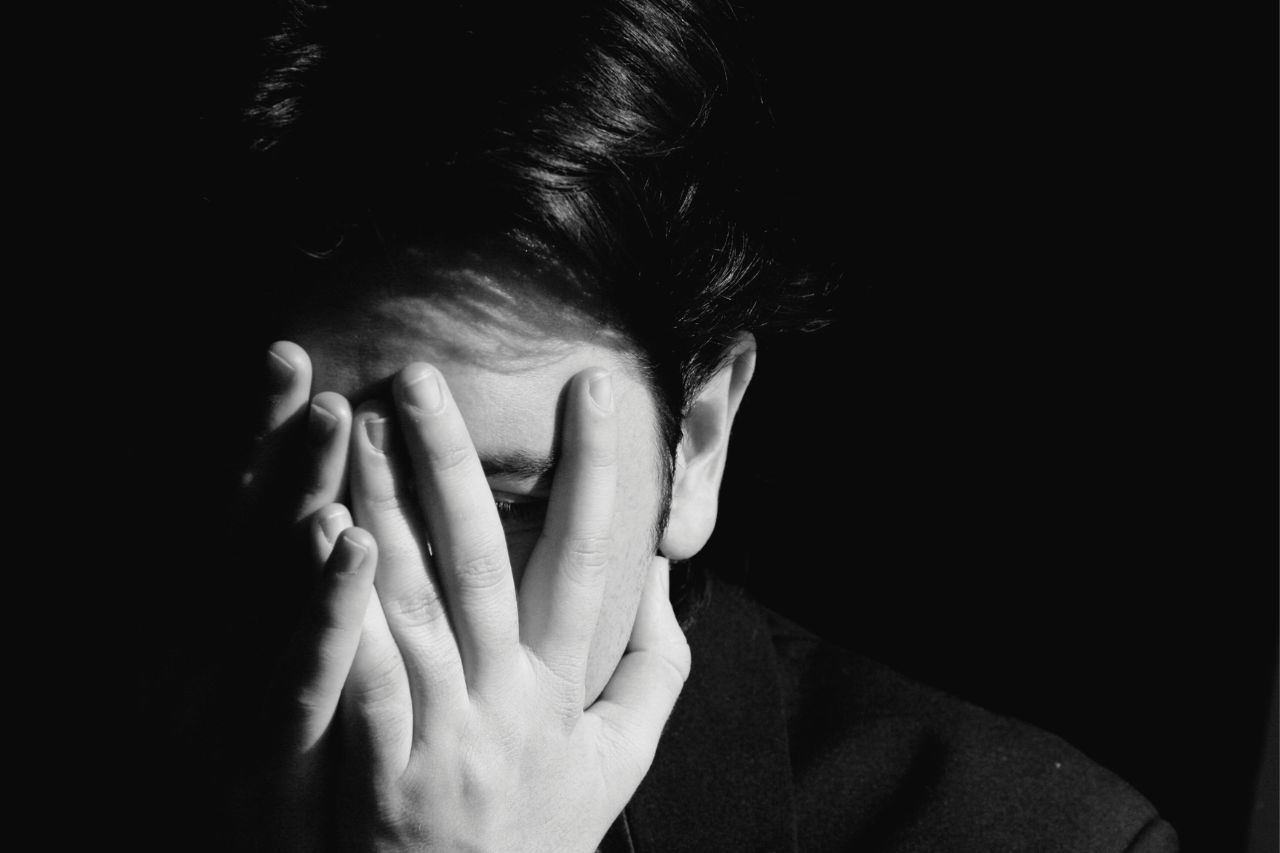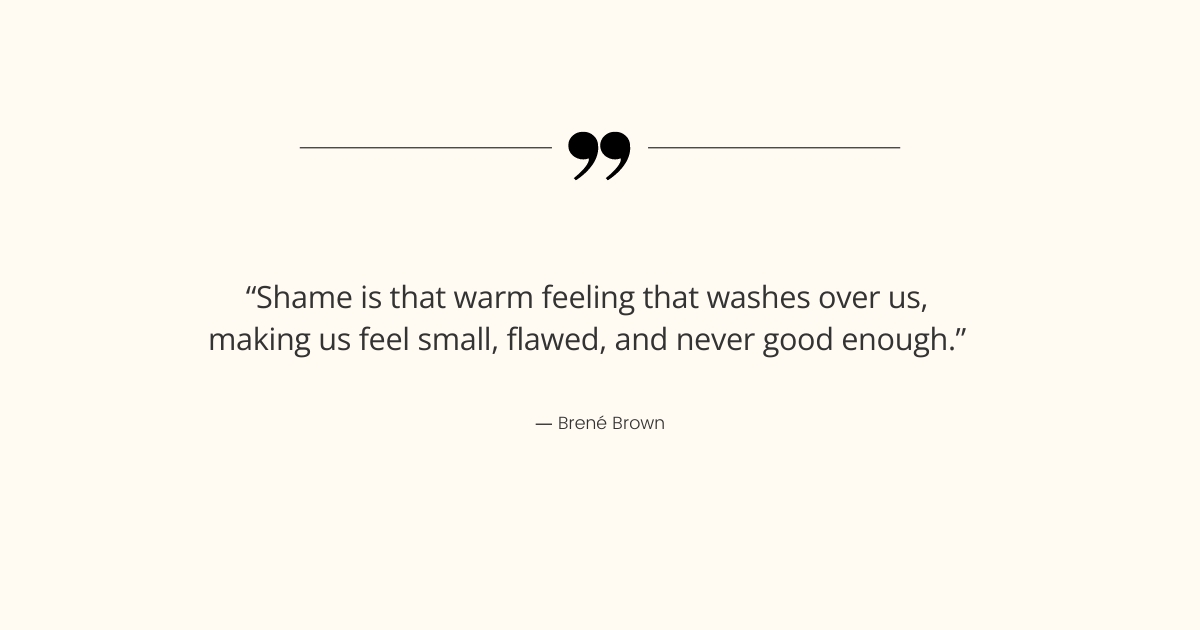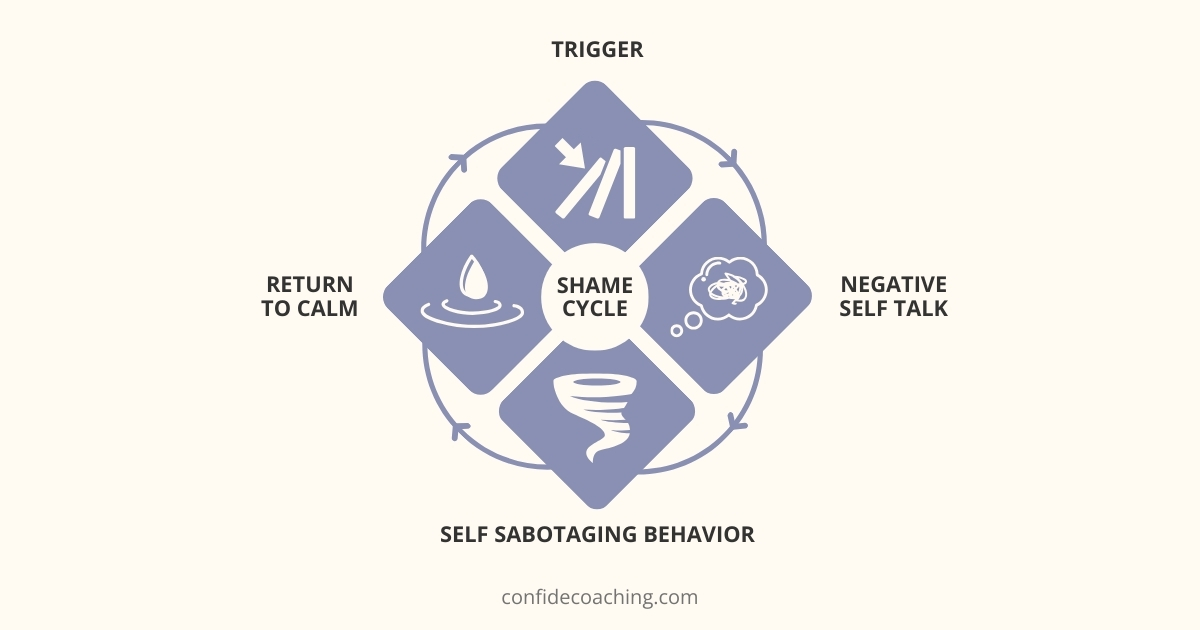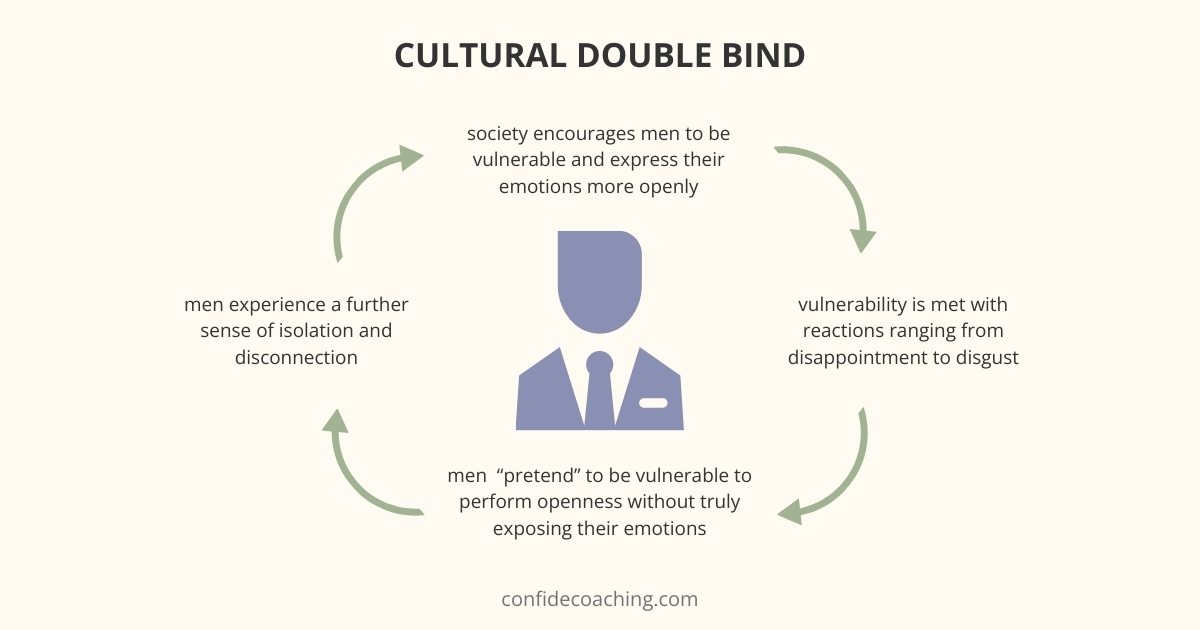
Shame is an emotion that, left unchecked, can erode our strength and resilience, acting as a silent undertow in the lives of many—yes, even the most outwardly successful among us.
As a life coach, I’ve seen firsthand the many faces of shame: it’s not just a fleeting feeling of embarrassment or a momentary lapse of confidence. It’s deeper, more pervasive, often nesting in the corners of our psyche without our conscious acknowledgment.
Have you ever felt a nagging sense of not being enough, despite your achievements?
Or perhaps you’ve experienced a sudden, inexplicable withdrawal from opportunities you once longed for?
How about situations and instances related to the concepts of masculinity and femininity? A strong man never asks for help. A good woman never pursues ambition over family.
These instances might not always be labeled as ‘shame’ in your internal dialogue, but they carry its signature.
Shame can morph into various forms, disguising itself as fear, self-doubt, or even perfectionism, influencing our decisions and interactions in ways we might not fully understand.
It knows how to blend into the backdrop of our lives, making it particularly challenging to recognize and confront.
Living in the shadows of shame robs us of many of life’s true treasures, such as building authentic connections and living a life true to oneself. These are just two examples among many of the profound impacts that shame can have on our lives.
Recognizing that shame exists within us is the first step towards building strength and resilience. Understanding its nuances can unlock a level of self-awareness and empowerment previously untapped.
Think about this for a moment: How might your life change if you could transform the energy of shame into a force for growth and self-compassion?
As we embark on this journey together, I invite you to consider these questions not just as rhetorical musings, but as a call to introspection and action. The path from shame to strength is not only about overcoming but about harnessing our deepest vulnerabilities to fuel our resilience.
Ready to explore how?
Understanding Shame
To navigate the path from shame to strength, we must first delve deep into understanding what shame truly is. Unlike guilt, which says, “I did something bad,” shame whispers more insidiously, “I am bad.”
It’s a self-conscious emotion that roots itself in the belief that there is something fundamentally wrong with us, making it more personal and pervasive than other negative emotions.

The Nature of Shame
Shame is multifaceted; it can arise from external judgments or internalized beliefs shaped by our experiences, culture, and upbringing. It often lurks behind feelings of inadequacy, failure, or unworthiness, affecting how we see ourselves and how we believe others see us.
This emotional discomfort pushes us into the shadows, where we hide parts of ourselves that we fear would not be accepted if exposed.
Common Shame Triggers
Shame triggers vary widely among individuals, but they often relate to our sense of self and our social identity. Failures at work, challenges in personal relationships, or not meeting societal standards of success, beauty, or behavior can all evoke feelings of shame. Even the pressure to conform to gender roles, as highlighted in the introduction—where men feel they cannot ask for help and women feel they must not prioritize ambition over family—can serve as a powerful trigger.

The Universal Experience
It’s crucial to recognize that shame is a universal emotion. No one is exempt from feeling it at some point in their lives. However, the intensity and the frequency with which we experience shame can vary, influenced by our environment, personal history, and, importantly, our resilience against it.
Shame’s Impact
The impact of shame can be profound. It doesn’t just affect our emotional state; it can influence our behaviors, decisions, and relationships. Living under its shadow, we may avoid taking risks, hide our true selves, or become overly critical and judgmental—of both ourselves and others. Shame can stifle our growth, limit our potential, and, in its worst forms, lead to destructive or self-sabotaging behavior.
Shifting Perspectives
But what if we could shift our perspective on shame? Instead of viewing it as an enemy to be battled, we could see it as a signal, an opportunity for introspection and growth. By understanding our shame, its triggers, and its effects, we open the door to transforming this painful emotion into a catalyst for personal development.
The goal isn’t to eradicate shame entirely—that’s an unrealistic expectation. Instead, it’s about learning to recognize it, understand it, and, ultimately, build the resilience needed to prevent it from dictating our lives.
Let’s explore how we can turn our moments of vulnerability into opportunities for strength and connection, breaking free from the chains of shame to lead a more authentic, fulfilled life.
Embracing Vulnerability: A Lesson from Brené Brown
When Brené Brown says, “Vulnerability is our most accurate measure of courage,” she is emphasizing the idea that the willingness to be open, to show our true selves, including our fears and flaws, is a profound act of bravery.
In her research, Brown has found that vulnerability is at the core of meaningful human experiences. It is the foundation upon which relationships are built, creativity is fostered, and genuine connections are made.
By embracing our vulnerability, we engage with the world from a place of authenticity and strength, rather than from fear or shame.
Brown challenges the common perception that vulnerability is a weakness. Instead, she argues that it requires a significant amount of emotional strength and self-awareness to be vulnerable.
The courage to be vulnerable is about showing up and being seen for who we are, fully and honestly, which allows us to live more fully and to love with our whole hearts.
But what does it mean to be vulnerable?
To be vulnerable means to open ourselves up to the possibility of being hurt, criticized, or rejected.
It’s about showing our genuine selves to the world—our hopes, fears, dreams, and insecurities—without the armor we typically use to shield our egos from potential pain.
Vulnerability involves letting go of the facade we often present to fit in or be accepted and instead, embracing our authentic selves, warts and all.

So, should we just throw open the doors to our innermost selves indiscriminately, sharing our deepest thoughts and feelings with everyone we meet?
I wouldn’t suggest anyone do that.
Vulnerability doesn’t mean oversharing or ignoring boundaries.
It’s about conscious choice and trust.
It means selectively opening up to those we trust and feel safe with, allowing ourselves to be seen fully in those relationships.
It’s in these moments of openness and genuine connection that vulnerability proves to be a strength rather than a weakness.
Being vulnerable means:
- Asking for help when we’re used to being the one who has all the answers.
- Saying “I love you” first, without knowing if the feeling is mutual.
- Admitting we don’t know something in a room full of experts.
- Sharing our art, writing, or creative work with the public, despite the fear of criticism.
- Discussing our mental health struggles in a society that often stigmatizes them.
- Acknowledging our mistakes and apologizing, even when it’s painful to do so.
This deliberate choice to be open and real about our experiences and emotions, especially when it’s difficult, is at the heart of living vulnerably.
It’s about embracing the uncertainty and emotional exposure that come with being human and recognizing these as opportunities for growth and connection rather than as threats to our self-worth.
Vulnerability, as defined by Brené Brown and experienced in everyday life, is the gateway to deeper connections, enhanced creativity, and a more authentic life.
It is through vulnerability that we allow ourselves to experience true courage, compassion, and connection—the very elements that give purpose and meaning to our lives.
This perspective shifts how we view courage, not as the absence of fear, but as the strength to be oneself in the face of fear.
The Vulnerability Paradox in Men: A Closer Look at the Cultural Double Bind
Vulnerability presents a challenge for everyone, regardless of gender. However, societal norms tend to offer more acceptance towards women expressing their emotions and showing vulnerability, a courtesy less often extended to men.
Brené Brown’s research uncovers a stark and discomforting paradox that sits at the heart of male vulnerability—a cultural double bind that leaves many men navigating between a “lose-lose” situation of emotional expression and societal expectation.
The paradox, as illuminated by Brown, reveals a painful pattern: while there is a growing call for men to embrace vulnerability, to share their fears, and to express their emotions openly, the reality of their experiences often contradicts these pleas.
When men do take the courageous step to be genuinely vulnerable, the reaction they encounter can be far from welcoming–from both sexes.
Navigating a Cultural Double Bind
This paradox presents a cultural double bind for men. On one hand, the evolving narrative around masculinity encourages men to break free from the shackles of traditional stoicism and to embrace a more open, vulnerable expression of their emotions.
On the other hand, when men respond to this call, they often face backlash, not only from the societal norms that have long policed the boundaries of masculinity but, quite poignantly, from the very individuals who urged them to open up.
The Recoil of Fear
According to Brown, the moment of true vulnerability in men is frequently met with reactions ranging from disappointment to disgust, rooted in fear. This fear is not necessarily conscious or intentional but is a conditioned response that has profound implications for men.
It sends a mixed message: “Be vulnerable, but stay within the bounds of what is comfortable for me.” This reaction underscores a significant gap between the intellectual acceptance of male vulnerability and the emotional readiness to support it.
The Impact on Men
Men, astute observers of these dynamics, become adept at navigating this paradox. They learn to “pretend” to be vulnerable, to perform openness without truly exposing their deeper fears and emotions.
This act of pretending, while offering a semblance of compliance with changing norms, further entrenches the sense of isolation and disconnection that genuine vulnerability seeks to overcome. It perpetuates a cycle of surface-level engagement that stifles authentic connection and understanding.

A Call for Authentic Support
The vulnerability paradox in men highlights a critical area for cultural growth and personal reflection. It challenges both individuals and society at large to examine the underlying fears and biases that contribute to this paradox. To move beyond it, there must be a collective effort to not only encourage men to be vulnerable but to genuinely support them when they are.
This involves creating safe spaces for men to express their vulnerabilities without fear of judgment or recoil, promoting a culture of empathy and understanding that values emotional honesty over the facade of silent strength.
Towards a New Understanding
Breaking free from this paradox requires a shift in how we view vulnerability and strength, not just in men but in all individuals.
It calls for a deeper appreciation of the courage it takes to be vulnerable and a commitment to fostering authentic connections that can withstand the discomfort of true emotional openness.
As we navigate this complex terrain, let us remember the transformative power of vulnerability—how it can deepen relationships and enhance personal growth.
Actionable Steps to Embrace Vulnerability
Embracing vulnerability is a process that requires patience, practice, and a gentle reminder that it’s okay to be a work in progress.
Here are some actionable steps to start practicing vulnerability in your life, acknowledging that it’s not always easy and will take time:
1. Start Small: Choose low-risk situations to express your feelings or ask for help. This could be sharing a personal story with a close friend or admitting you don’t know something in a familiar group setting. Small acts of vulnerability can build your confidence over time.
2. Identify Safe Spaces and People: Not everyone is worthy of your vulnerability. Identify the people in your life who have been consistently supportive and understanding. Start by opening up more to these individuals, observing that your openness is met with empathy and non-judgment.
3. Practice Self-Compassion: Be kind to yourself during moments of vulnerability. Remind yourself that it’s human to feel scared, embarrassed, or uncertain. Self-compassion is a powerful tool that can help you navigate these emotions with grace.
4. Set Boundaries for Sharing: Vulnerability is not about sharing everything with everyone; it’s about knowing when and with whom to share. Understand your comfort level and set boundaries accordingly. This ensures that your attempts at vulnerability are respectful of your limits.
5. Reflect on Your Experiences: After being vulnerable, take some time to reflect on the experience. How did it feel? What was the reaction? Reflecting on these experiences can provide insights into how you can approach similar situations in the future.
6. Seek Feedback: If you’re comfortable, ask for feedback from those you’ve opened up to. Understanding how your vulnerability is received can help you gauge the effectiveness of your communication and adjust as needed.
7. Embrace Discomfort: Recognize that feeling uncomfortable is part of the process. Growth truly happens when we expand our comfort zones. Each time you lean into vulnerability despite the discomfort, you’re building strength and resilience.
8. Celebrate Your Courage: Acknowledge and celebrate the moments you choose vulnerability over safety. Recognizing your bravery, even in small moments, can reinforce the positive aspects of vulnerability and encourage you to continue along this path.
Embracing vulnerability is never an easy task. It overloads our emotional systems and comes heavily loaded with both challenges and rewards.
This journey toward openness and authenticity demands courage to confront our deepest fears and insecurities, to face potential judgment and rejection head-on.
Yet, it’s precisely in this act of bravery—of choosing to be seen in our most genuine form—that we uncover true strength.
It’s about finding that inner resilience to show up authentically, fully aware that by doing so, we’re not only living more fully but also forging deeper, more meaningful connections with those around us.
Embarking on this path requires patience and compassion towards oneself.
Vulnerability can feel like an uphill battle, as it pushes against long-held beliefs and societal norms that often equate emotional openness with weakness.
However, the rewards—increased intimacy, strengthened relationships, and a profound sense of belonging—far outweigh the discomforts.
So, take it one step at a time.
Celebrate the small victories and learn from the moments when it feels like too much.
Remember, each step forward, no matter how small, is a part of a transformative journey that not only enriches your own life but also touches the lives of those around you.
Be patient with yourself as you navigate through this complex but ultimately rewarding process of embracing vulnerability.

Paul Strobl, MBA, CPC
Owner of Confide Coaching, LLC
Paul is a Master Life Coach for GenX and GenY executives and business owners. Originally from Houston, Texas, he has been location independent for most of his adult life. He currently resides in the Rhodope Mountains of Bulgaria near the Greek border with his brilliant wife, 14-year-old stepson (officially adopted in 2021!) and a Posavac Hound rescue.
References
Brown, Brené. “Daring Greatly: How the Courage to Be Vulnerable Transforms the Way We Live, Love, Parent, and Lead”. Gotham Books, 2012.
Brown, Brené. “The Gifts of Imperfection: Let Go of Who You Think You’re Supposed to Be and Embrace Who You Are”. Hazelden Publishing, 2010.
Brown, Brené. “Rising Strong: The Reckoning. The Rumble. The Revolution”. Spiegel & Grau, 2015.
Brown, Brené. “Braving the Wilderness: The Quest for True Belonging and the Courage to Stand Alone”. Random House, 2017.

